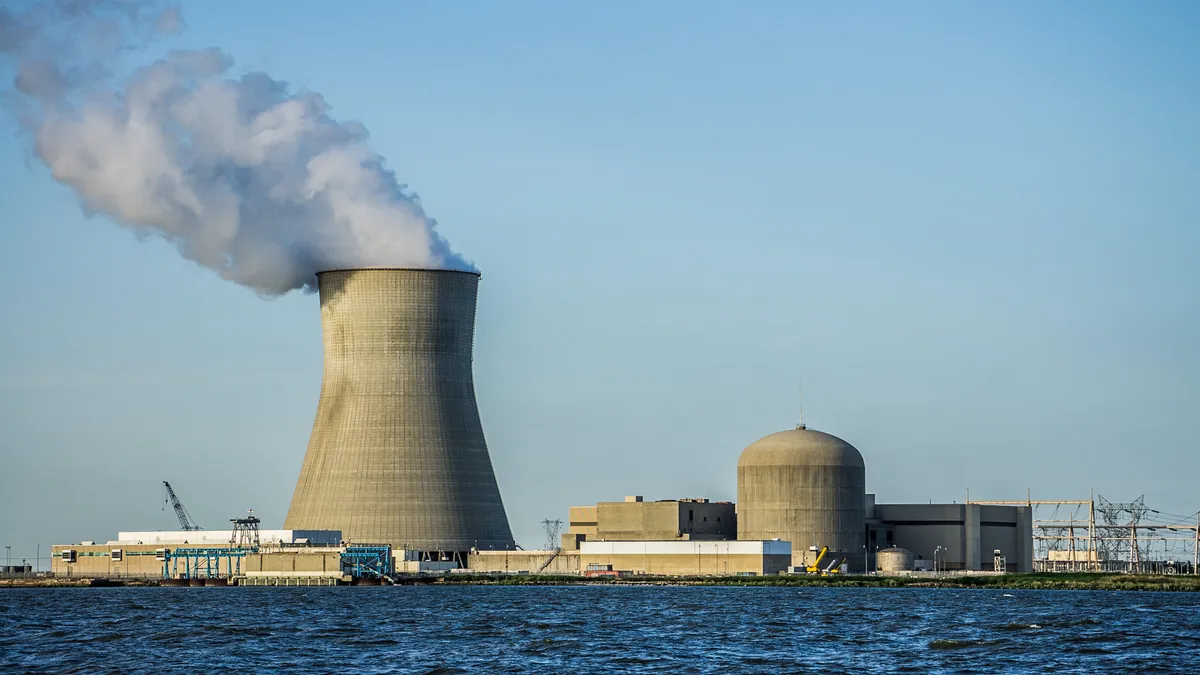Dive Brief:
-
Public Service Enterprise Group is in talks to sell power to data centers from its capacity in the Hope Creek and Salem nuclear power plants in southern New Jersey, where it owns 2,486 MW, according to Ralph LaRossa, PSEG chair, president and CEO.
-
Power demand from each of the mid-sized data centers ranges from about 50 MW to 100 MW, LaRossa said Tuesday during PSEG’s first-quarter earnings call. Inquiries from potential data centers also include requests for behind-the-meter, co-located facilities that seek “highly reliable carbon-free baseload power from existing facilities, all without the challenges faced by non-dispatchable generation,” he said.
-
The nuclear power plants could support New Jersey’s efforts to create an artificial intelligence hub, according to LaRossa. “Our New Jersey nuclear units could provide access to a highly reliable, carbon-free source of baseload power ... for the large data center developers and hyperscalers,” he said.
Dive Insight:
PSEG subsidiary PSEG Power owns the 1,174-MW Hope Creek nuclear power plant and a 57% stake in the 2,287-MW Salem nuclear plant, as well as a 50% share in the 2,549-MW Peach Bottom nuclear plant in Pennsylvania.
The Salem and Hope Creek nuclear plants have been awarded zero-emission certificates by the New Jersey Bureau of Public Utilities through May 2025. When the state zero-emission credit plan ends, the entire output from the plants could be available for long-term contracts, according to LaRossa.
When thinking about the potential size of data center offtakers, LaRossa pointed to Talen Energy’s recent agreement to sell a planned 960-MW data center campus in Pennsylvania to Amazon.com’s cloud computing unit, Amazon Web Services, for $650 million. Talen will sell power to AWS from its 2,228 MW stake in the nearby Susquehanna nuclear power plant.
New Jersey is well positioned to add load onto the grid in part because of transmission upgrades that were made after the 2003 Northeast blackout and rebuilt switching stations and substations after Hurricane Sandy in 2012, according to LaRossa. “The margins aren't quite as tight as some others might have,” he said.
Meanwhile, PSEG Power is planning to increase capacity at the Salem nuclear station by up to 200 MW, which would qualify for clean hydrogen tax credits under current rules for both additionality and hourly matching, LaRossa said.
PSEG Power has also notified the Nuclear Regulatory Commission that it plans to seek 20-year license renewals for the three units at the Hope Creek and Salem plants in New Jersey extending their lives to 2056, 2060 and 2066, respectively, he said.
PSEG is on track to meet its five-year, $19 billion to $22.5 billion capital spending plan through 2028, with $18 billion to $21 billion of spending at its Public Service Electric & Gas utility, according to LaRossa.
PSE&G is exploring additional investment opportunities, which won’t require issuing equity, LaRossa said.
In December, the PJM Interconnection awarded a PSEG subsidiary a roughly $424 million transmission project to address load and reliability issues in Maryland and northern Virginia. The project has an expected in-service date of 2027, PSEG said Tuesday in its quarterly report with the Securities and Exchange Commission.
In April, PSE&G submitted bids to the New Jersey Board of Public Utilities for a combination of onshore and near-shore underwater infrastructure, with an announcement of winning bidders expected in the second half this year, according to the report.
PSEG subsidiaries may participate in July solicitations for transmission to support New Jersey’s offshore wind goals and for PJM’s 2024 regional transmission expansion plan, which is expected to include the effects of higher load growth forecasts, the utility company said.
On the financial front, PSEG first-quarter net income plunged to $532 million, or $1.06/share, from $1.3 billion, or $2.58/share, in the year-ago period. Not including certain one-time items, such as a mark-to-market gain, operating earnings fell 17% to $169 million, or 33 cents/share, in the first quarter, down from $203 million, or 40 cents/share, a year ago. Revenue fell to $2.8 billion in the quarter from $3.8 billion a year ago.
In part the reduced earnings were caused by taxes and higher operations and maintenance expenses, according to PSEG.















